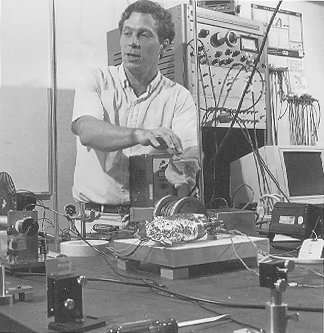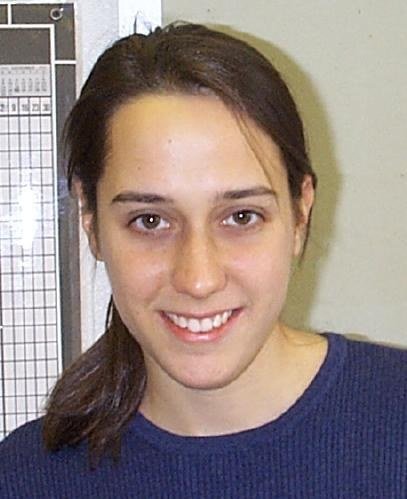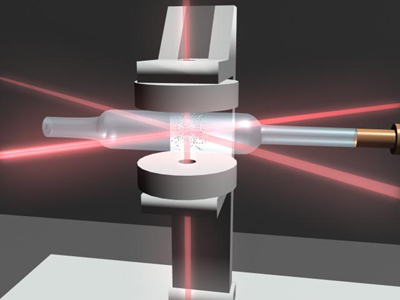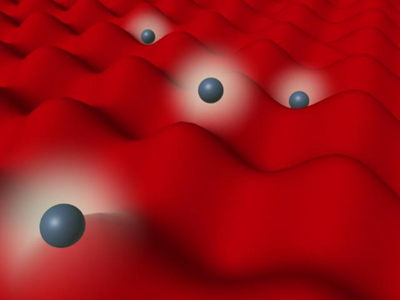A nanoscale surface full of holes and made of nothing more than laser light could be used to optically trap individual atoms in each cup. The surface could light the way to a quantum computer for the parallel solution of problems inaccessible to conventional computers.
Physicist Greg Lafyatis of Ohio State University and doctoral student Katharina Christandl working with electrical engineer Jin-Fa Lee and fellow doctoral student Seung-Cheol Lee in the ElectroScience Laboratory reckon a quantum computer will enable much faster computing than is possible today, at least for certain problems. They realised that one productive strategy for making such a computer would involve packaging individual atoms on a chip and using a laser beam to read and write the quantum data, the qubits, in much the same way the laser in a DVD rewriter reads and writes information to a disc.

Greg Lafyatis
Numerous teams are working on arrays for handling qubits (quantum bits). Their optical lattices are usually three-dimensional structures, which makes accessing atoms at the centre difficult with a single laser (although two can lock in on its coordinates). The Ohio team, on the other hand, have created a single-layered array, which they explain has a more practical design. With just one layer of atoms grounded about 150 nanometres above a glass chip, or other dielectric material, they can manipulate each atom directly with a single laser beam making the read-write processes much simpler.
We’re pretty sure we can trap atoms – the first step towards making a quantum memory chip, Lafyatis explains, A working computer based on the design is many years away, though, he cautioned. In fact, Christandl suspects that the researchers are at least two years away from being able to isolate just one atom per trap. Right now, we’re just trying to get atoms into the traps, period, she said. The team hopes to complete the first stage before Christandl graduates in August. We are working very hard in the lab to try and make these traps, Lafyatis explains. Edison had it right: 98% perspiration vs. 2% inspiration.

Katharina Christandl
The team will be presenting their latest results to the DAMOP05 of the American Physical Society in Lincoln, Nebraska, during 17th-21st May.

Lasers and magnetic fields capture vaporized atoms to make a tiny cloud of atoms

With no magnetic field to hold them in their cloud, atoms fall into the cups formed by two criss-crossing laser beams
Further reading
Phys Rev A, 70, 032302
http://dx.doi.org/10.1103/PhysRevA.70.032302
Greg Lafyatis
http://www.physics.ohio-state.edu/directory_pages/detail.php3?id=114
Katherina Christandl
http://www.physics.ohio-state.edu/directory_pages/detail.php3?id=163
Jin-Fa Lee
http://esl.eng.ohio-state.edu/~csg/cv/JinFaLee.html
Suggested searches
quantum computers